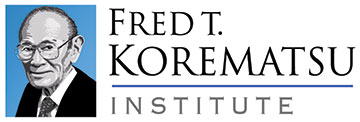March is Women's History Month
So this month we are celebrating some of the science, tech, engineering, and math (S.T.E.M.) women heroes who worked to develop the technology, studied the impact, made important discoveries, and helped to create the COVID-19 vaccine like researcher Kizzmekia Corbett, biochemist and researcher, Katalin Karik, Ph.D., Ph.D. fellows Racky Balde and Tatenda Zinyemba and 14-year old scientist, Anika Chebrolu.
“It is essential. There are tremendous untapped capacities within women and girls that can bring about change and contribute to their countriesRacky Balde
Racky Balde and Tatenda Zinyemba, two Ph.D. fellows at UNU-MERIT, have both been studying the impact of COVID-19 in Africa and highlight the importance of including girls in S.T.E.M. (science, technology, engineering, and math) education. Read an interview on their work in the UNICEF blog here:
“I had great teachers in elementary and high school who inspired an early interest in nature and biology. In eighth grade, I participated in a national biology competition and was recognized as the third-best in the country. And, in high school, I already knew I wanted to be a scientist.” – Katalin Karikó, PhD
Katalin Karikó, Ph.D., is a biochemist and researcher, is an immigrant from Hungary whose work led to the mRNA technology used to make COVID-19 vaccines effective. She collaborated with Drew Weissman, MD, Ph.D., and together invented the modified mRNA technology used in Pfizer-BioNTech and Moderna’s COVID-19 vaccines more than 15 years ago. This tech made it possible for mRNA to reach the correct part of the body and trigger an effective immune response to fight disease.
Learn more about her hobby of reading old scientific papers and how that resulted in the development of the mRNA technology that works in the COVID-19 vaccine in the Proceedings of the National Academy of Sciences (PNAS), the official journal of the National Academy of Sciences (NAS) here: https://www.pnas.org/doi/10.1073/pnas.2119757118
“The other thing that struck me about my time in Sri Lanka was the diversity of the institution where I worked. I was working alongside people from all walks of life who were speaking multiple languages and had different expertise, and that had a very notable impact on how science was done and the sense of collaboration. The concept of diversity within that institution was very refreshing.”
For Kizzmekia Corbett, she had worked six years as a research fellow and was a lead on the Coronavirus Vaccines Team at the National Institute of Allergy and Infectious Diseases (NIAID) Vaccine Research Center when SARS-CoV-2 first appeared in 2019. Her lab and work led to the development of the Moderna vaccine for COVID-19.
Learn more about her work, what she has learned in working on the Moderna vaccine and what she has learned about collaboration, rest, and diversity from working in an international lab: https://bit.ly/3ikLn8Z
“And after researching about the flu, I realized that even with the current antivirals that we have, even with these annual vaccinations that we have, there’s still about 60,000 deaths in the USA alone, despite all these therapies that are there every year. So it kind of caused me to think, what can I do about this? What can I do about this problem to help ease the mortality caused by the flu?” – Anika Chebrolu
Anika Chebrolu submitted a project on the spike protein of SARS-COV2 to the Young Scientists Lab when she was 14, in 8th grade, unsure if her innovation would help create an effective COVID-19 vaccine. She won the competition and $25,000 dollars and discovered a “compound that can bind to the coronavirus, inhibiting its ability to infect people”. She hopes to continue her studies and eventually work in drug development.
Learn more about her work, her future plans for high school and beyond: https://bit.ly/3qhb8f3
